SEO, or Search Engine Optimization, is all about making your website easier to find on search engines like Google.
It involves improving your website’s structure, content, and credibility so that search engines rank it higher when users search for relevant topics.
The better your SEO, the more visibility your website gets—bringing in more visitors, leads, and potential customers.
Did you know that 57% of B2B marketers say SEO brings them more leads than any other marketing strategy? And 49% of marketers believe organic search gives them the best return on investment.
These numbers prove how powerful SEO marketing can be.
In this blog, we’ll break down SEO marketing in simple terms. We’ll explore what it is, why it’s crucial for marketers, the different types of SEO marketing, and some useful SEO marketing tactics.
What is SEO marketing?
Think about the last time you searched for something online—maybe a new gadget, a local restaurant, or travel destinations.
Where did you start? Most likely on Google or another search engine. That’s where SEO marketing comes in.
SEO marketing is the process of optimizing a website so that it appears higher in search engine results. The goal here is to attract more visitors who are already searching for what your business offers.
By improving your website’s structure, content, and credibility, SEO helps search engines recognize its relevance and rank it accordingly.
Good SEO marketing isn’t just about stuffing keywords into content. It’s about understanding your audience—what they’re searching for, how they search, and what kind of content they find useful.
It involves strategies like keyword research, high-quality, SEO-friendly content creation, link building, improving site speed, and making sure your website is mobile-friendly.
In short, SEO marketing helps businesses get found online, drive organic traffic, and convert visitors into customers—all without paying for ads.
That’s why it’s also known as organic marketing.
Why is SEO marketing important?
Imagine having a great product or service, but no one can find your website. That’s where SEO marketing makes all the difference.
Search engines like Google are one of the main ways people discover businesses online.
Whether they’re looking for information, comparing products, or ready to make a purchase, showing up in search results puts you in front of potential customers at the right time.
45% of shoppers use Google to research purchases before buying in a physical store, and 77% rely on Google when searching for local businesses.
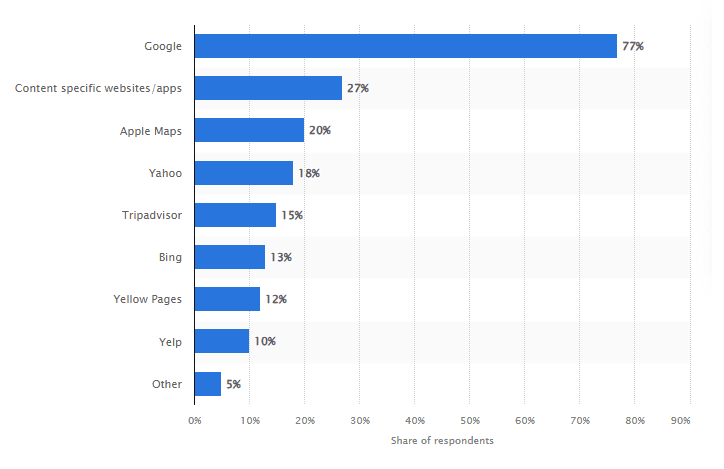
Consumers using search platforms to look for local business information
That means if your website isn’t optimized for search, you could be missing out on a huge chunk of potential customers.
With global eCommerce revenue expected to exceed $6.4 trillion by 2029, businesses can’t afford to ignore SEO.
Ranking higher on search engines increases visibility, drives more organic traffic, and boosts credibility. Unlike paid ads, which stop working when you stop paying, good SEO keeps bringing in traffic over time.
Simply put, if your business isn’t showing up in search results, your competitors are (which means bad news).
SEO marketing helps users find your website and ultimately drives sales and conversions.
How does SEO work?
SEO works by helping your website match what search engines consider high-quality, relevant content.
Search engines like Google and Bing use some complex algorithms to decide which pages deserve the top spots in search results.
The better your website aligns with these criteria, the higher it ranks—and the more visibility it gets.
But search engines are somewhat secretive about the algorithms as they don’t reveal their exact ranking formulas.
And they keep updating their formulas constantly to improve user experience (you can check Google’s complete algorithm history here).
That’s why SEO is a tough and time-consuming task. Think of it as an ongoing process of testing, analyzing, and adapting.
How do search engines work?
Search engines help users find the best answers to their queries by following a three-step process: crawling, indexing, and ranking.
Let’s break it down with examples.
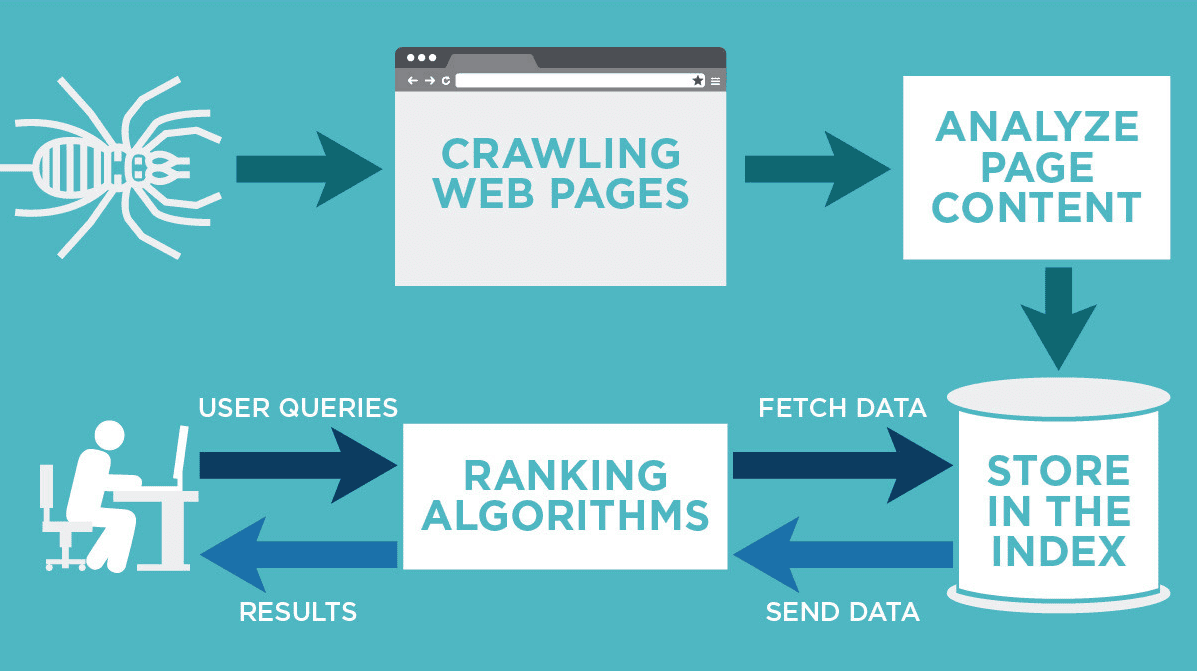
Google crawling and indexing
Crawling – Search engines use bots (also called crawlers or spiders) to explore the web and find content. Think of them as little detectives scanning every webpage they find. They follow links from one page to another, just like you click on links while browsing.
For example, if you publish a new blog post and link it to an existing page, search engines can find and crawl it faster.
Indexing – After crawling a page, search engines decide whether to store it in their massive database, called an index.
If a page is indexed, it means search engines consider it useful and relevant enough to show in search results. However, not all pages get indexed—if a page has poor content or technical issues, search engines may skip it.
Imagine writing an amazing article, but if search engines don’t index it, it’s like having a book in a library that’s not in the catalog—no one can find it!
Ranking – When you search for something on Google, it sorts through its index to show the most relevant pages.
But how does it decide the order? That’s where ranking factors come in.
Search engines consider things like:
- Content relevance – Does your page answer the searcher’s question?
- Keywords – Does your page include the words people are searching for?
- Backlinks – Do other trusted websites link to your page?
- User experience – Is your site fast, mobile-friendly, and easy to navigate?
For example, if you search best smartphones under $500, Google won’t just show random pages. It will prioritize pages with detailed comparisons, reviews, and product listings—because that’s what users expect to see.
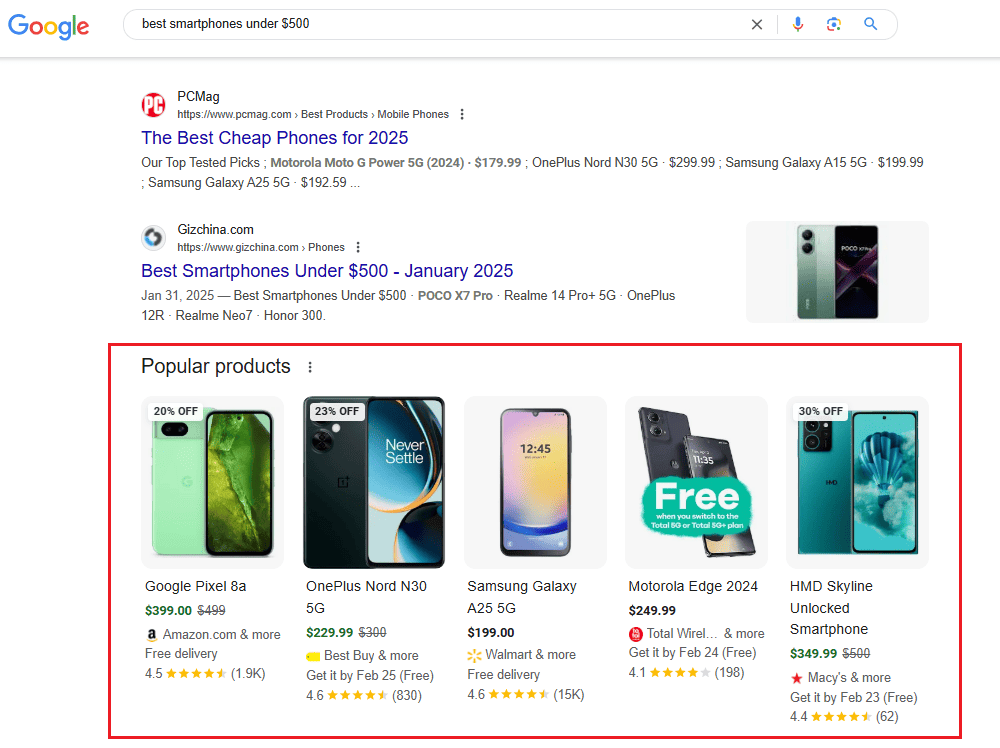
All these extra features help users find information faster.
Search engines aim to show the most helpful, relevant, and user-friendly content.
If your website aligns with these ranking factors, it has a better chance of appearing higher in search results and getting more visitors.
What are the different types of SEO marketing?
SEO marketing falls into three general categories. Let’s take a look at them:
1. On-page SEO
On-page SEO refers to the optimization of individual web pages to make them more search engine-friendly and user-friendly.
It involves optimizing every part of your page—content, headings, images, and links—to ensure it ranks higher in search results and provides a great experience for visitors.
So, what goes into on-page SEO? Here are the key elements:
- Title Tag – It’s the clickable headline that appears in search results. It should be short, clear, and include important keywords. For example, instead of “Best Running Shoes,” a better title tag could be “Best Running Shoes for Comfort and Speed – 2024 Guide”.
- Meta Description – This is the short text that appears under the title in search results. It should summarize the page and entice users to click. A good example: “Looking for the best running shoes? Check our expert reviews and top picks for comfort, durability, and performance.”
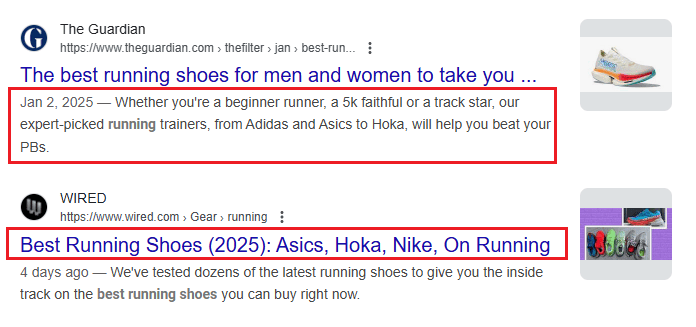
- Header Tags (H1, H2, H3, etc.) – These structure your content and highlight key sections. The H1 is usually the main title, while H2s and H3s organize subtopics. For example, in a blog about “Best Running Shoes,” your H2s could be “Top Picks for Beginners” and “Best Shoes for Marathon Runners.”
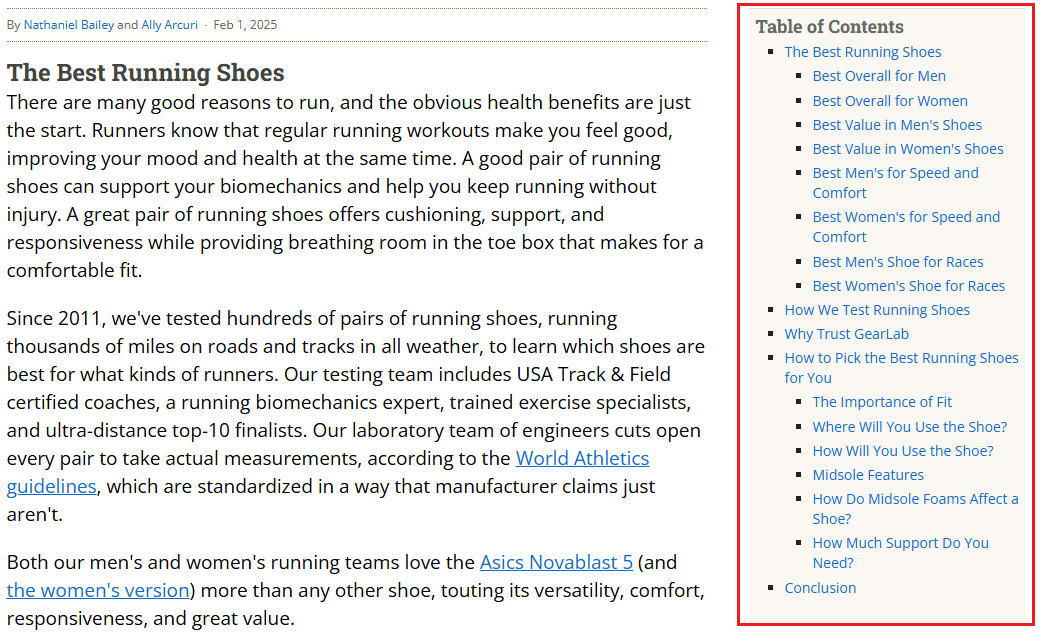
- Content – The heart of on-page SEO. Your content should be informative, engaging, and have relevant keywords—but not stuffed unnaturally. For example, if you’re writing about healthy smoothie recipes, naturally include keywords like “easy smoothie recipes,” “nutritious smoothies,” and “best ingredients for smoothies.”
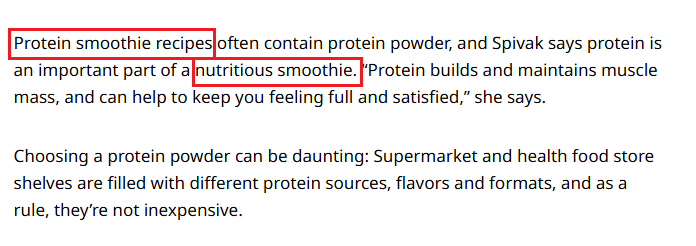
- Images – Pictures make your page visually appealing, but they should be optimized too. Use compressed images for fast loading and alt text to describe them (e.g., “Strawberry banana smoothie in a glass”). Adding alt text to your pictures helps search engines understand what the image is about.
- Internal Links – These connect different pages on your site. For example, if you’re writing about “Best Running Shoes,” you can link to another page about “How to Choose the Right Running Shoes.” This helps users navigate your website and it also boosts SEO.
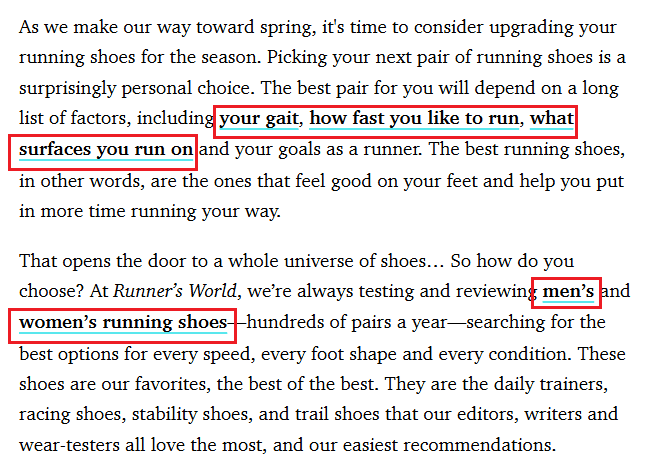
- External Links – These point to reputable sources outside your website. If you’re writing about health tips, linking to a trusted site like the World Health Organization adds credibility.
2. Off-page SEO
Off-page SEO is about what happens outside your website to boost its authority and ranking in search engines.
While on-page SEO focuses on optimizing content and structure within your site, off-page SEO helps build credibility through external factors like backlinks, social media presence, and brand mentions.
Here are the main elements of off-page SEO:
- Backlinks – When any reputable site links to your page, search engines see it as a sign that your content is valuable. For example, if a popular fitness blog links to your article on “Best Running Shoes,” it shows to Google that your content is worth ranking higher. The more high-quality backlinks you get, the stronger your site’s authority.
- Social Media Engagement – Likes, shares, and comments on social media don’t directly impact rankings, but they do help you get traffic and boost visibility. For example, if your blog post about “Healthy Eating Tips” gets shared widely on Facebook, more people visit your site, increasing engagement and credibility.
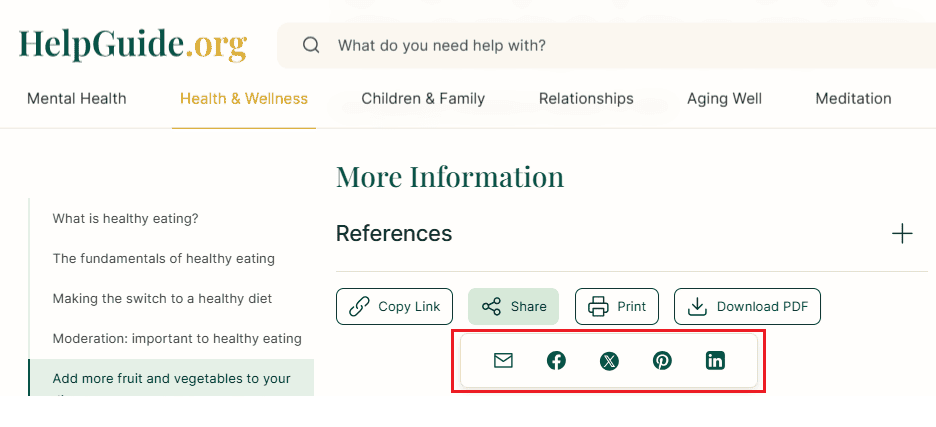
- Brand Mentions – Even if a website doesn’t link to you, just mentioning your brand name can strengthen your online presence. For example, if a tech influencer tweets about your latest gadget, it increases awareness and trust, which can indirectly help your SEO.
- Guest Posting – Writing articles for other websites in your industry is a great way to earn backlinks and expand your audience. For example, if you run a digital marketing agency and publish a guest post on a well-known marketing blog, you not only get a backlink but also establish yourself as an expert in the field.

3. Technical SEO
Technical SEO is about optimizing the behind-the-scenes aspects of your website to make it easier for search engines to crawl, index, and rank.
Even if you have great content, technical issues can hold your site back—so fixing them is key to better visibility in search results.
Now let’s look at the main elements of technical SEO:
- Website Structure – A well-organized website makes it easy for users and search engines to navigate. Think of it like a library: if books (web pages) are properly categorized and labeled, they’re easier to find. A clear URL structure, logical categories, and internal linking help search engines understand your site’s content better.
- Website Speed – Search engines prioritize fast-loading pages because they provide a better user experience. If a page takes forever to load, visitors might leave before even seeing your content. Tools like Google PageSpeed Insights can help you measure and improve your site’s speed.
- Mobile-Friendliness – More than half of web traffic comes from mobile devices, so Google now ranks mobile-friendly sites higher. A responsive design ensures your site looks decent and works smoothly on any screen size.
- Security (SSL & HTTPS) – Search engines prioritize secure websites to protect users from data theft. If your website still uses HTTP instead of HTTPS, visitors may see a warning that it’s not secure. Installing an SSL certificate helps keep your site safe and trustworthy.
- XML Sitemap – XML sitemap lists all the important pages on your website, helping Google find and index them faster. If you have a large website, updating your sitemap regularly ensures that new and updated pages get discovered quickly.
How does SEO differ from SEM and PPC?
Regarding increasing visibility on search engines, three commonly used terms are SEO, SEM, and PPC.
While they all aim to drive traffic to a website, all of them work differently.
SEO focuses on improving a website’s ranking in organic (unpaid) search results. This involves optimizing content, improving site speed, and earning backlinks.
A website ranking well for relevant keywords can generate consistent traffic without ongoing costs.
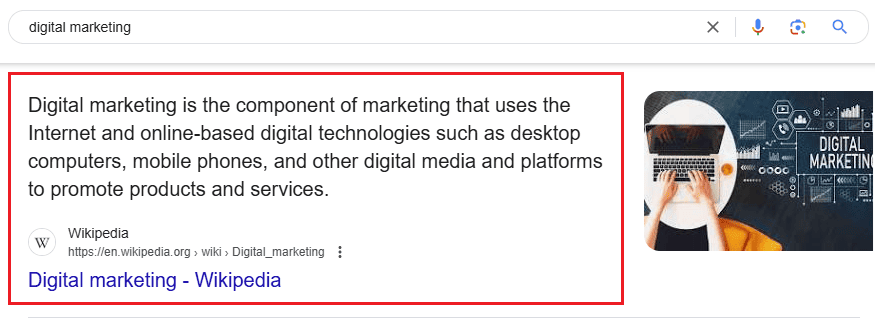
However, SEO takes time to show results.
SEM (aka Search Engine Marketing) is a broader term that includes both SEO and paid advertising (PPC). It is a marketing approach that uses organic and paid strategies to improve search engine visibility.
PPC (Pay-Per-Click) is a form of paid advertising where businesses pay for each click on their ad.
These ads typically appear at the top of search results, labeled as “Sponsored” or “Ad.”
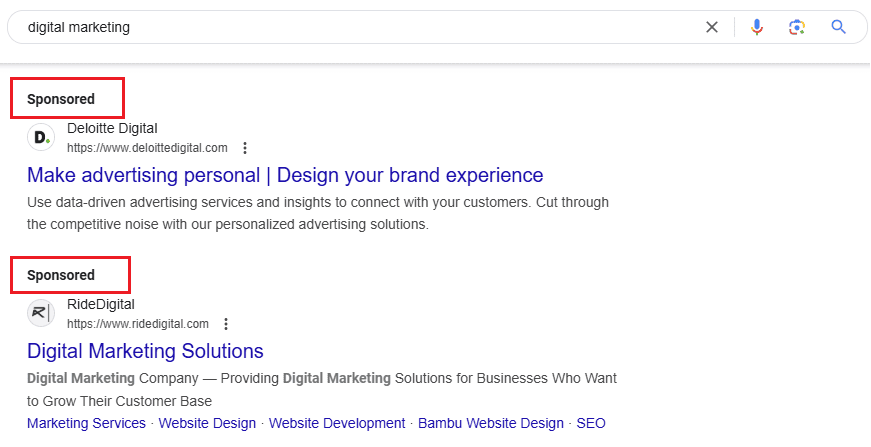
PPC provides immediate visibility, making it useful for competitive keywords. However, once the ad budget is spent, the traffic stops.
5 best SEO marketing tactics
Whether you’re optimizing SEO for your e-commerce store or any other website, these five important SEO marketing strategies can help improve your search rankings:
1. Conduct proper keyword research
Every page on your website that ranks in search engines is tied to one or more keywords (also known as search queries).
The very first step in any SEO strategy is to identify the keywords your visitors are using to find your site.
If you’re a business owner, your products or services may be exceptional, but if you’re not targeting the right keywords, potential customers might never find them online.
To conduct keyword research, use tools like Keywords Everywhere. Our browser extension helps you discover the keywords driving traffic to your website.
It also provides key data for your keyword, including search volume, competition, CPC (cost per click), and trend insights.
Like this:
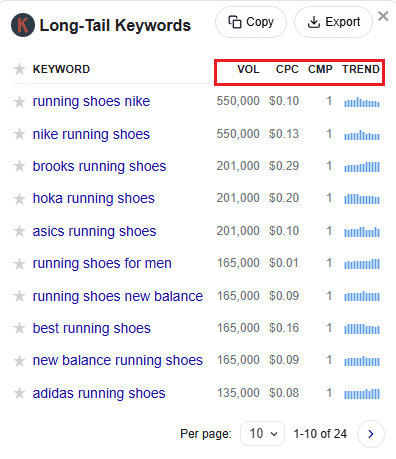
Use this data to determine which existing keywords are most valuable to your website and which new keywords you should focus on.
Ideally, your target keywords should have enough search volume to bring traffic but not be so competitive that you’re up against major brands with large marketing budgets. You won’t be able to compete with them.
Use Keywords Everywhere to narrow down your list of relevant and achievable keywords tailored to your site’s needs. You can read our complete guide on keyword research to learn more.
2. Understand your target audience
In SEO, your target audience consists of people who use search engines to find the products or services you offer.
Instead of trying to reach everyone, identifying your audience helps you focus on those most likely to engage and benefit from your content.
Your target audience is the foundation of your SEO strategy. They influence your keyword choices, content format, and overall optimization approach.
They also impact your search rankings, as search engines continuously refine their algorithms to match user behavior.
By optimizing your site for your audience, you increase your chances of ranking on the first page of search results for your keywords.
Install a Google Chrome extension like Keywords Everywhere or Keyword Surfer to find relevant keywords. These SEO tools allow you to conduct keyword research directly from your browser while viewing SERPs.
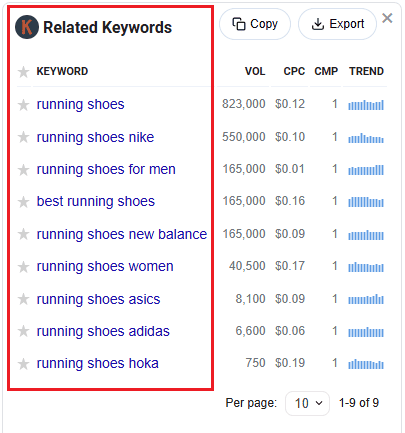
Then, you must analyze SERPs to find commonly asked questions, related searches, and featured snippets that Google predicts users will click on.
Since manual SERP analysis can be time-consuming, you can speed up the process with AI-powered SEO reports by Keywords Everywhere.
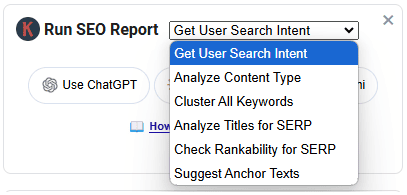
These reports provide crucial insights in seconds, helping you refine your keyword strategy effectively.
Read our complete guide to learn how to perform SERP Analysis.
3. Analyze your competitors
Once you know your target keywords and audience, the next step is to analyze your SEO competitors—the websites that are already ranking high for those keywords.
When you understand your competitors’ SEO strategies, you can develop tactics to improve your rankings and surpass them.
Even small businesses can use SEO to outrank larger competitors by creating high-quality, relevant, and in-depth content.
A good starting point for competitor analysis is identifying your competitors’ best-performing pages and analyzing their sources of organic traffic.
For example, if a competitor is driving significant traffic through an informative blog post, you can use that post as inspiration to create more valuable and engaging content.
With Keywords Everywhere, you can find the top 5000 keywords a competitor’s website or specific page ranks for.
It also provides estimated traffic, SERP ranking positions, and other key SEO metrics.
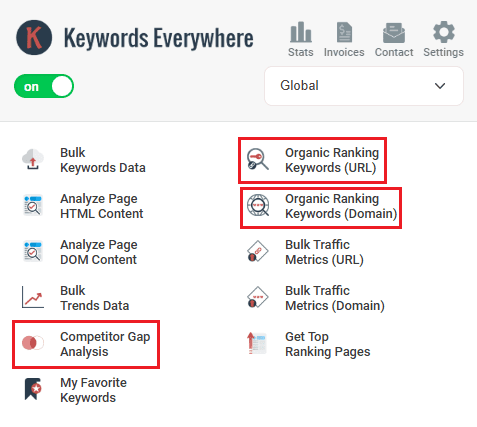
You can also perform a competitor gap analysis to find valuable keywords your competitors rank for, but you don’t.
Use this data to refine your SEO strategy and increase your chances of ranking higher.
4. Create SEO-friendly content
Creating SEO-friendly content requires consistent effort to ensure your target audience finds it valuable.
Every page on your website, including the homepage, about page, blogs, sales pages, and landing pages, should be optimized for search engines.
For example, if you own a fitness blog, your homepage should clearly describe your niche, such as “Expert fitness tips for weight loss and muscle building,” while incorporating keywords naturally.
This ensures both users and search engines understand the purpose of your site.
Each piece of content should provide unique, authoritative information that aligns with the searcher’s intent.
For instance, if someone searches “best foods for weight loss,” your article should provide expert insights and include detailed lists of specific foods, such as “avocados, leafy greens, and lean protein,” explaining why these foods are effective for weight loss.
Use primary and related keywords naturally, like “healthy weight loss foods” or “low-calorie meal options,” to boost SEO.
Your content should be structured in a way that is easy to read and navigate.
Instead of writing long boring paragraphs, break the content into smaller bits, using subheadings, bullet points, and numbered lists.
For example, in your article on healthy weight-loss foods, you could organize the information as follows:
Best Healthy Foods for Weight Loss
- Avocados
- Leafy greens
- Lean proteins (chicken, fish, tofu)
This structure makes it easy for readers to scan and find the information they’re looking for quickly.
Add images, graphics, and videos to enhance the reader’s experience.
For your blog post on “Best Foods for Weight Loss,” include images of the foods listed, such as avocados or lean proteins, to make the content visually appealing.
You could even create a video tutorial on meal prepping with these foods to add extra value. Share your expertise with the world. People love genuine and real content over copy-pasted one.
Also, add internal links to other relevant content on your website.
For example, if your article mentions “how to make healthy smoothies,” you can link to another post on your blog that covers “5 Healthy Smoothie Recipes for Weight Loss”.
This keeps visitors on your site longer and helps improve your site’s SEO.
Finally, add clear calls to action (CTAs) that encourage users to take the next step. At the end of your article, you might include a CTA like:
“Want a personalized meal plan for weight loss? Download our free nutrition guide now!”
All of this will help you create SEO-friendly content, which in turn will help you appear higher on search engines.
5. Acquire authoritative backlinks
Building relevant and authoritative backlinks is an effective way to improve your search engine rankings.
When trustworthy websites link to your content, it tells search engines that your website is valuable and credible.
To start building backlinks, first, make sure your business is listed on social media platforms and local business directories like Google My Business or Yelp.
These links from well-known sites give your website a credibility boost, which can help you rank higher in search results.
Next, reach out to relevant websites or news outlets where your audience spends time.
For example, if your website is about fitness, try pitching a blog post about “the best home workouts for beginners” to a popular fitness website or blog.
This can lead to a valuable link back to your site, making your content visible to more people.
You can also consider guest blogging. If you know a lot about a topic, offer to write a post for some other website in your industry.
In exchange, you can add a link to your own website in the post, helping to improve your site’s authority and SEO.
Conclusion
SEO marketing is a crucial part of digital marketing that helps drive organic or non-paid traffic to your site by improving its ranking on search engine results pages (SERPs).
When you optimize your site, you can outpace competitors and attract more relevant visitors.
Tools like Keywords Everywhere help you understand keyword performance, search volume, and competition.
With this data, marketers can create effective SEO strategies and stay competitive in the crowded digital space.


